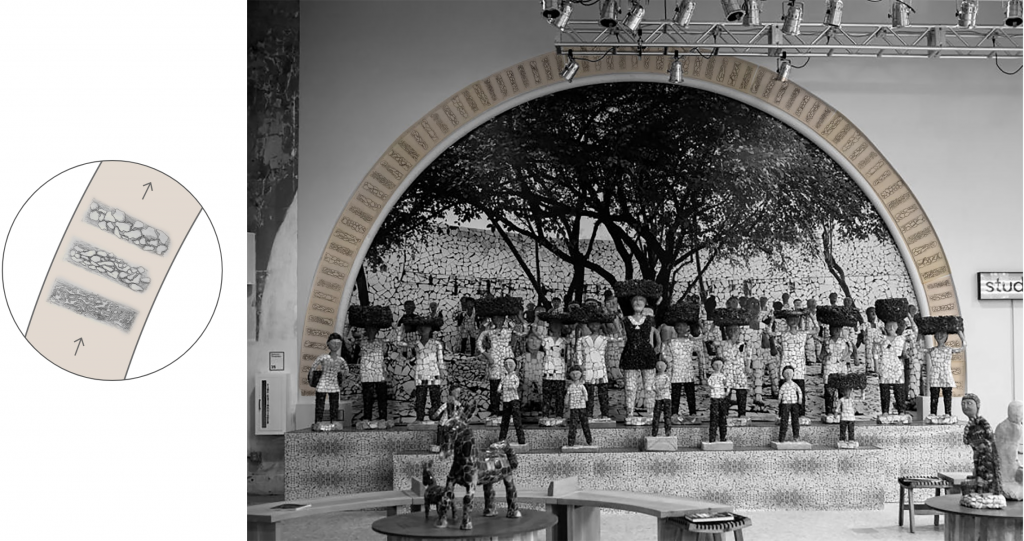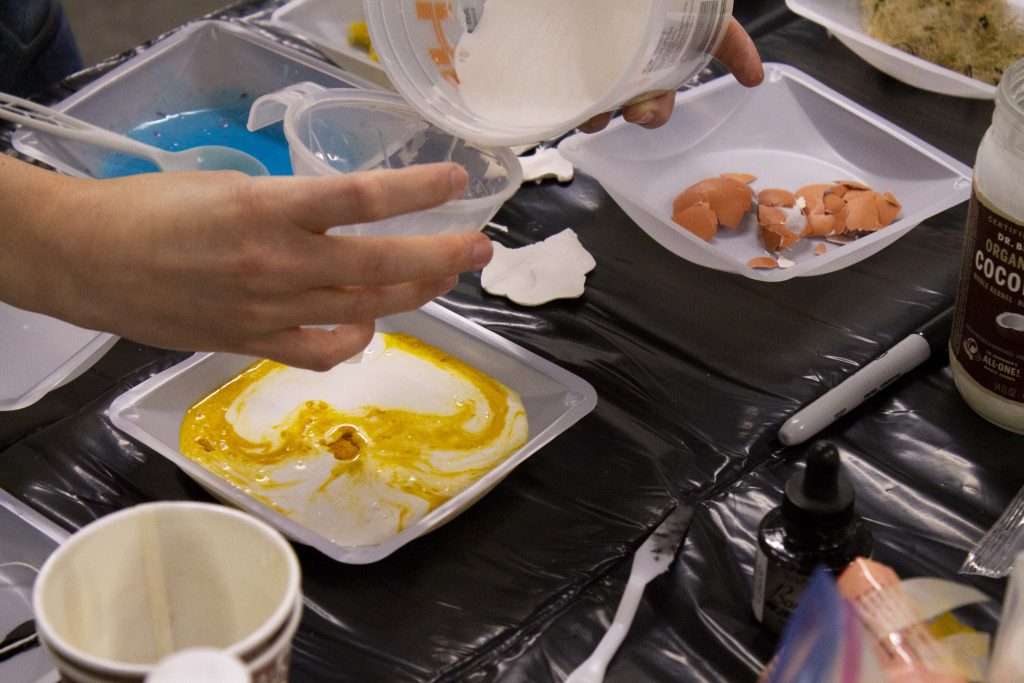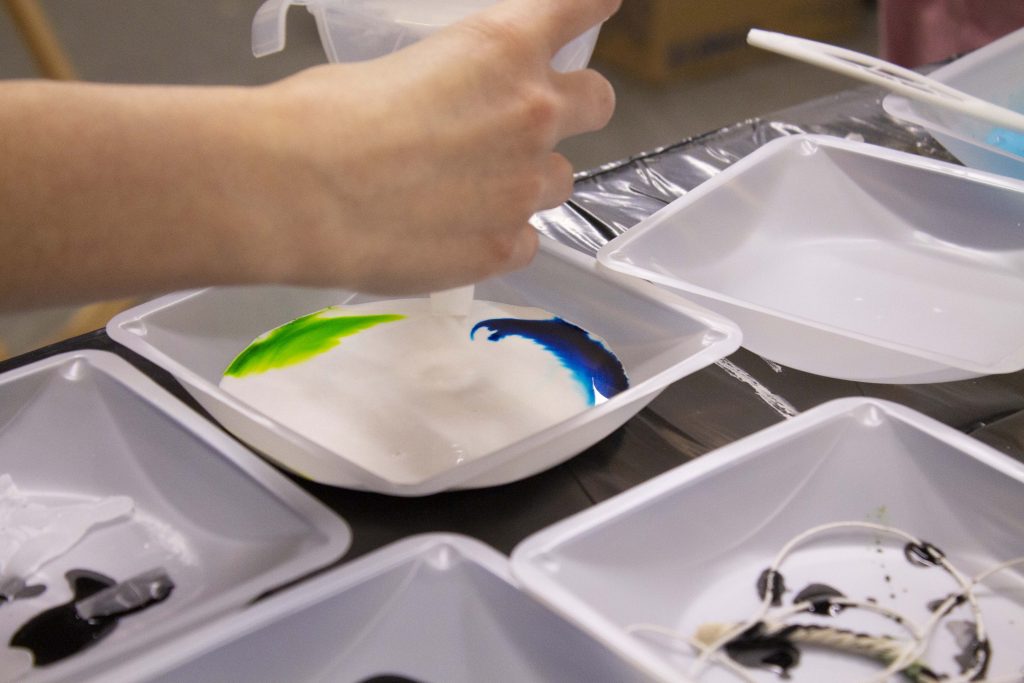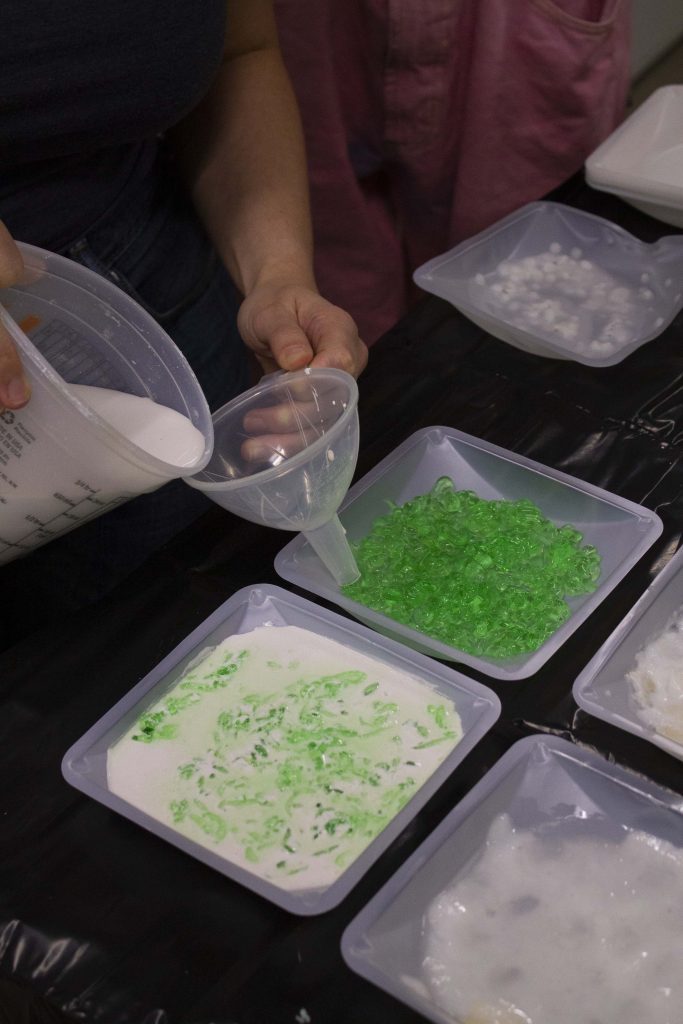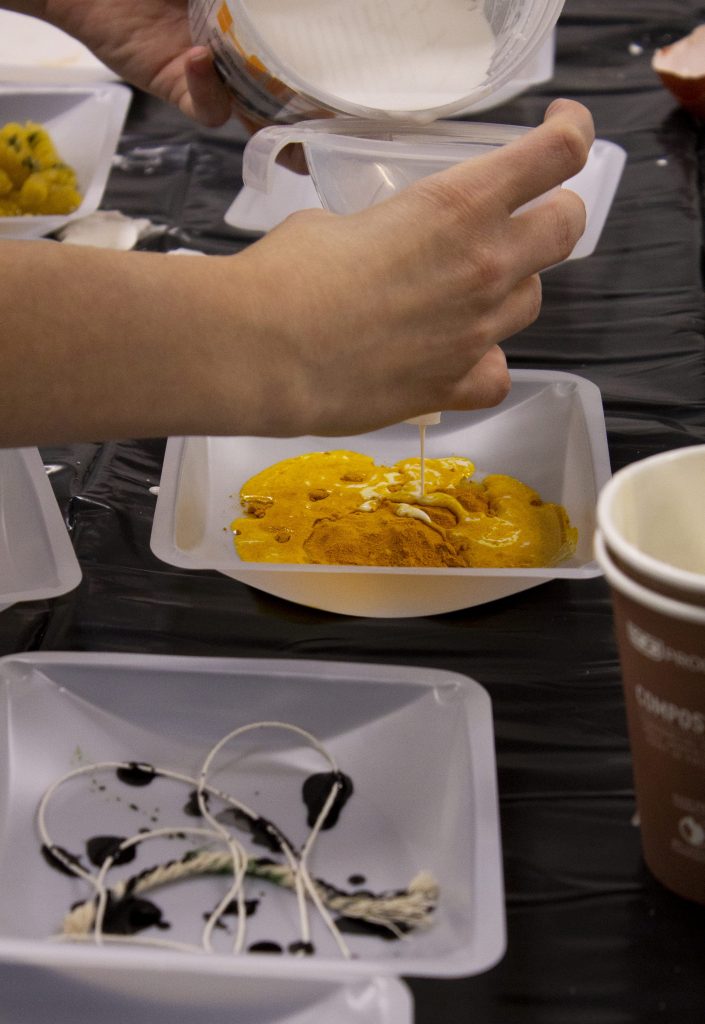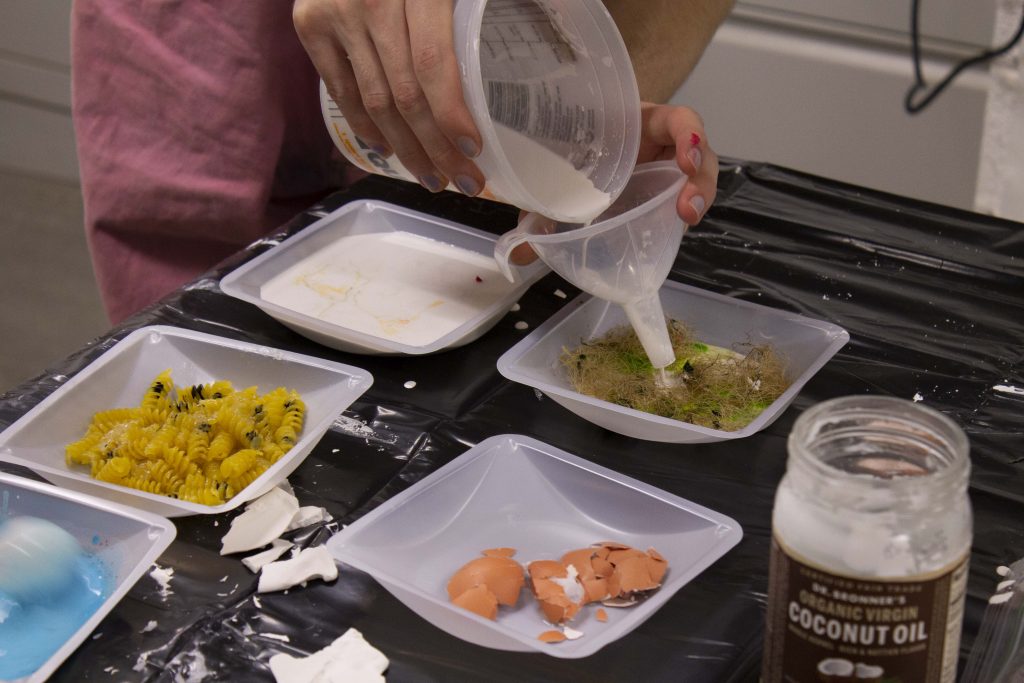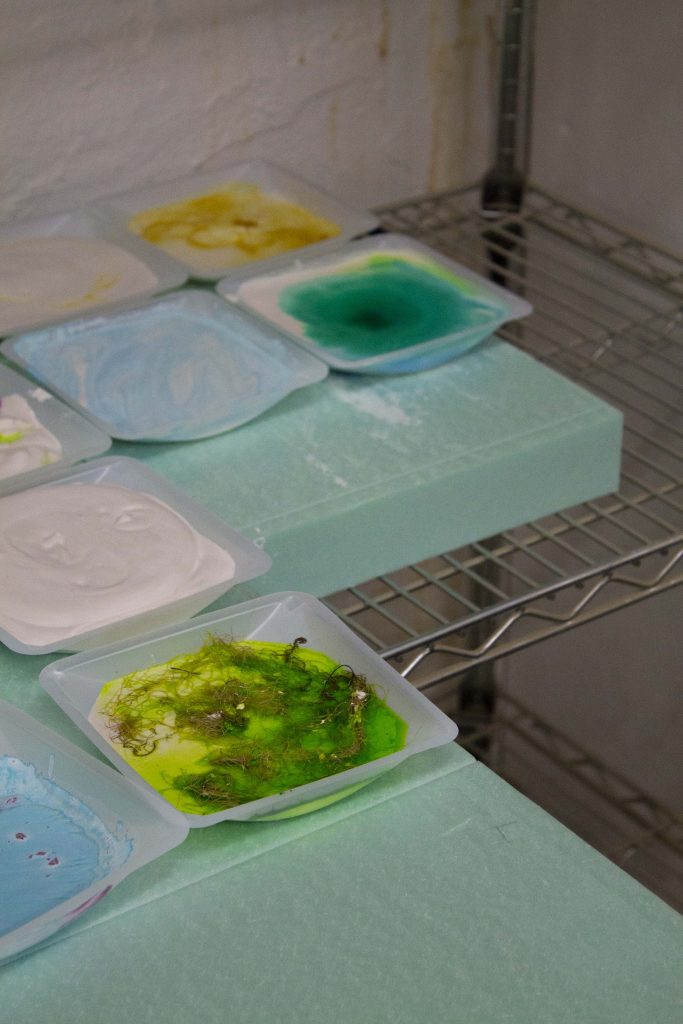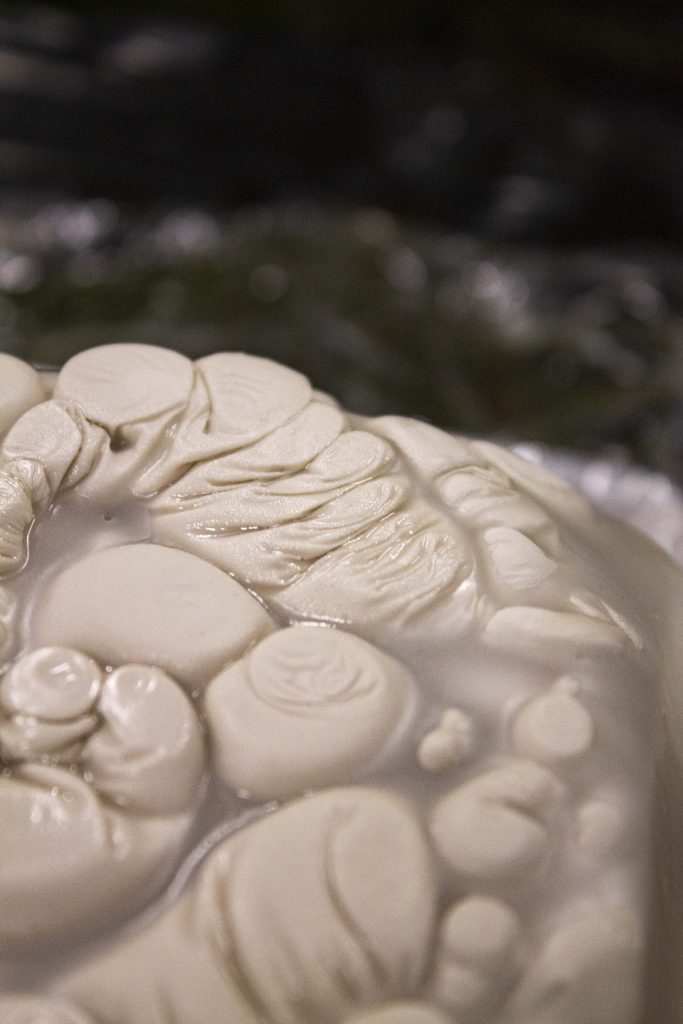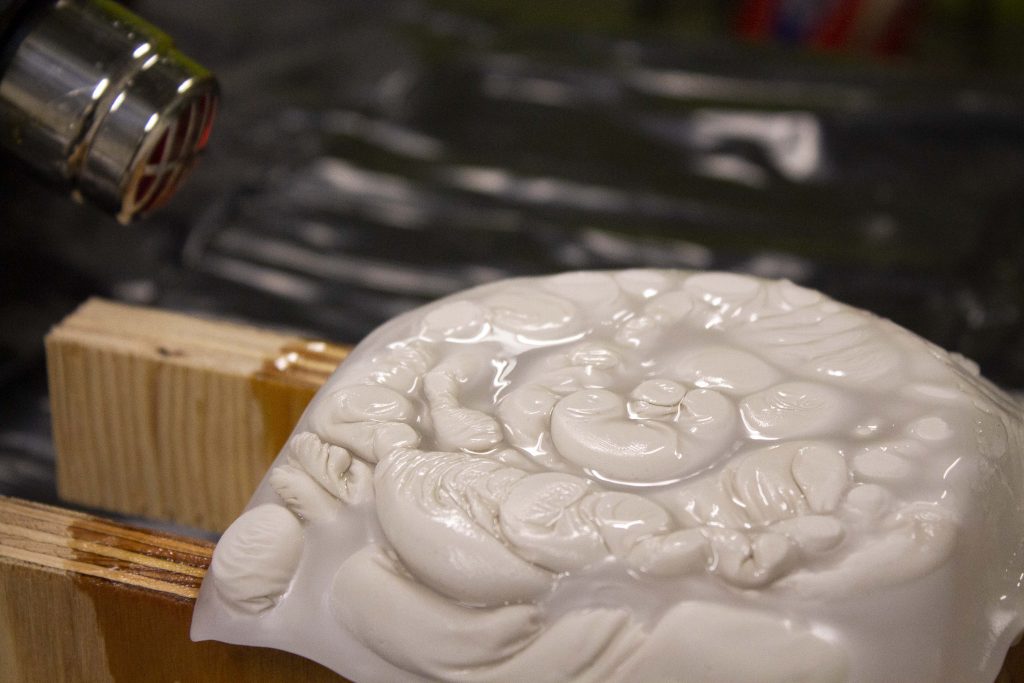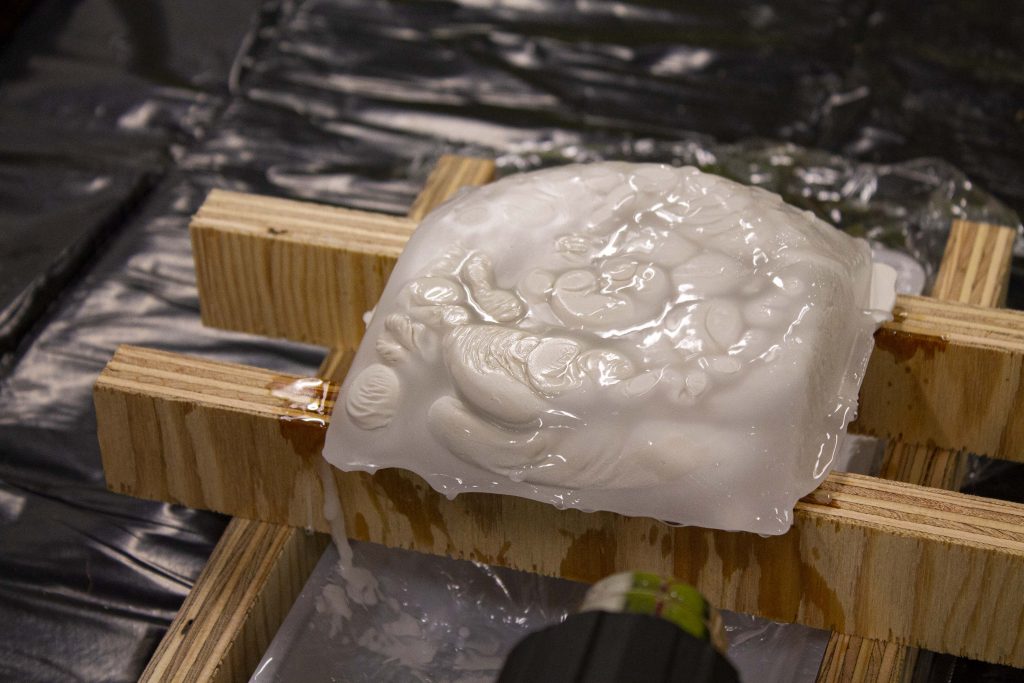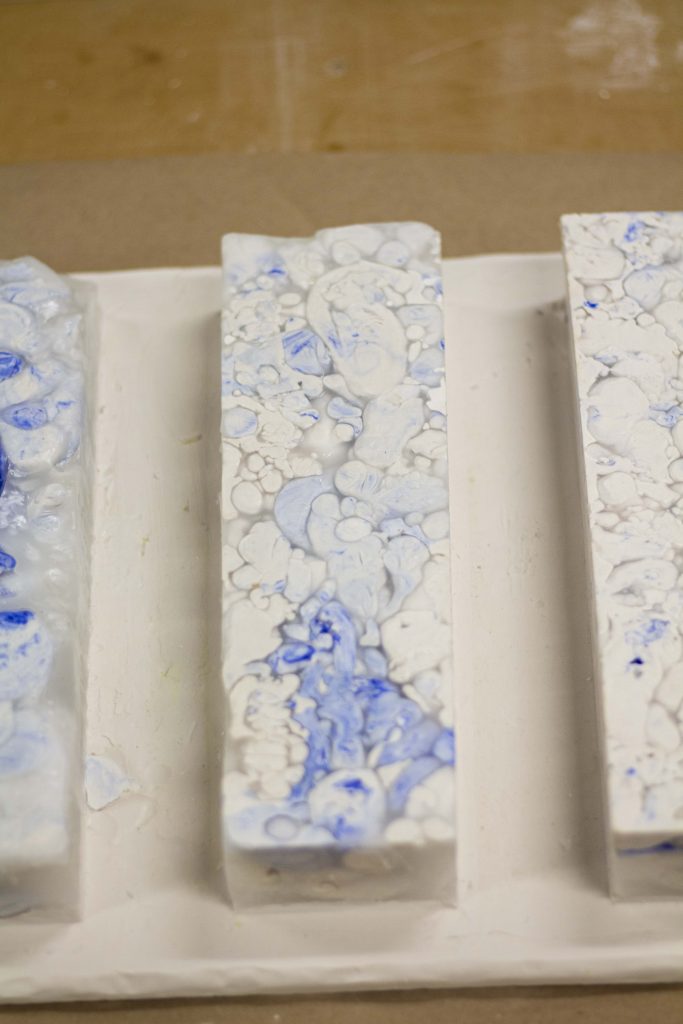We began this project with a set of iterative, experimental material studies to build an understanding of how plaster responds to other materials in the it’s working process. After two iterative cycles we focussed on one specific technique: plaster poured into molten paraffin wax, which highlights the unique nature of the plaster working process.
Initial Experiments
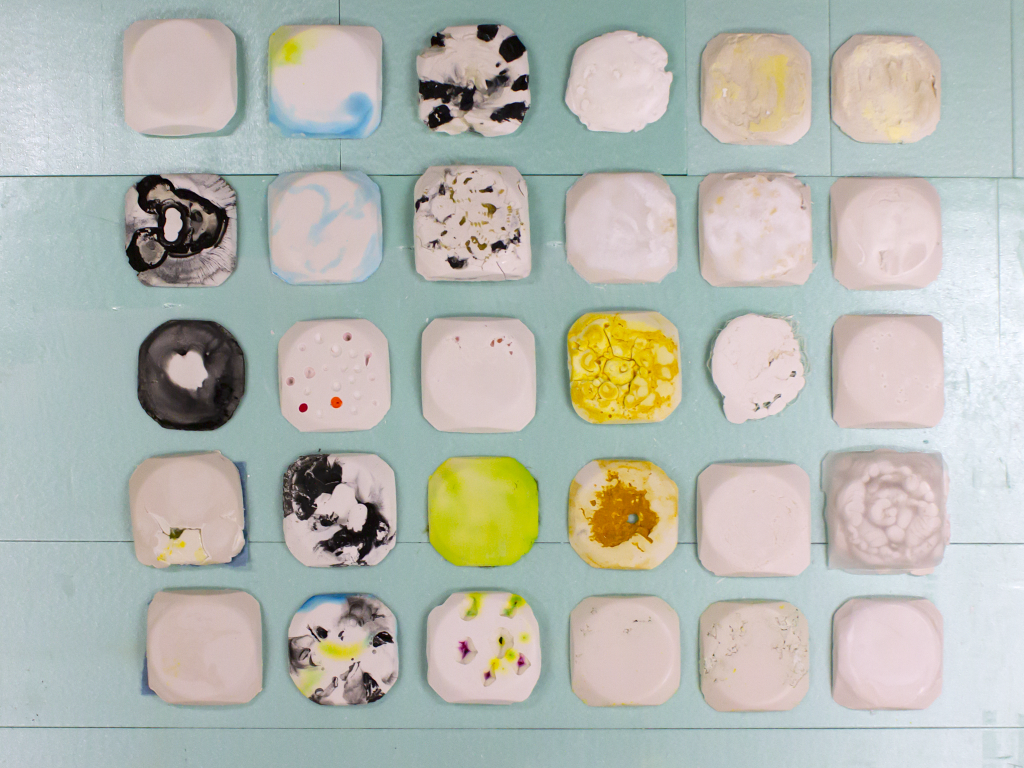
Paraffin Experiments:
In our initial studies we found ourselves most fascinated with plaster poured into molten paraffin. As we pour the cold plaster and water slurry into the molten paraffin wax we observe the plaster curl and bubble through the wax. The final forms show the unique, originally fluidic, state of plaster.
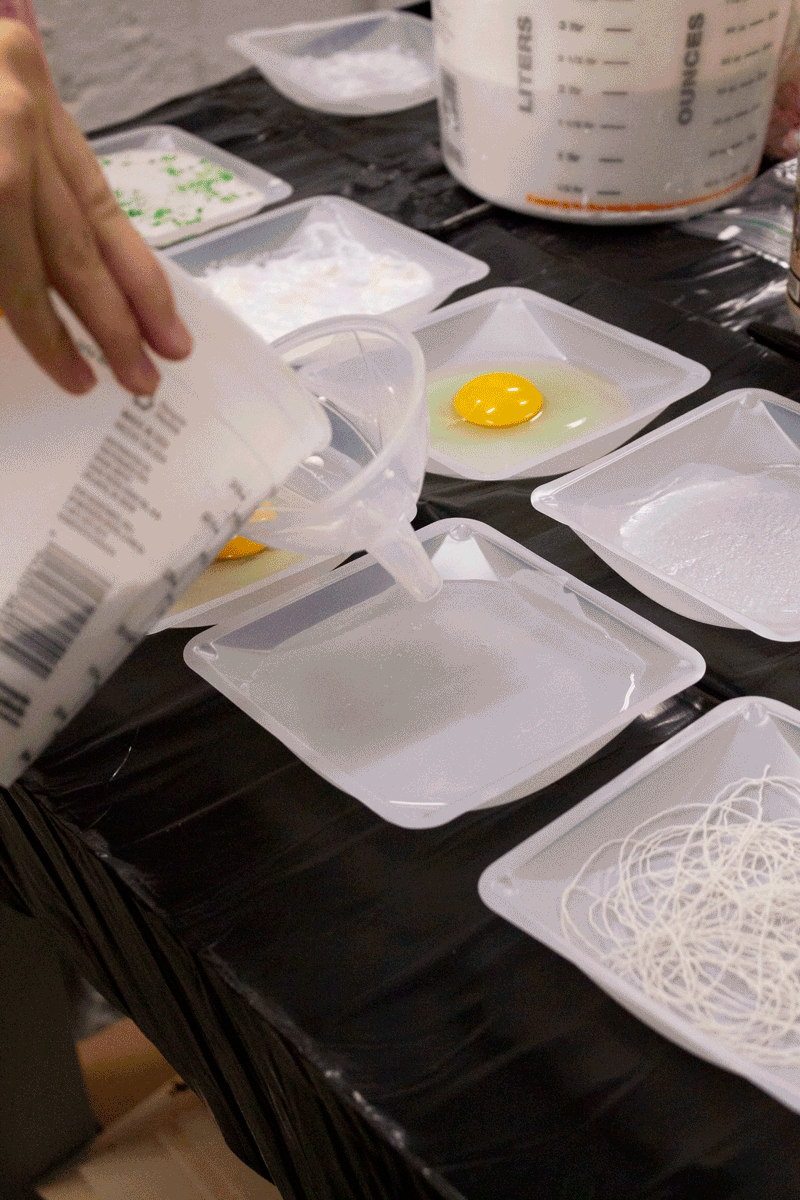
Towards a System Design
As we looked to turn our experiments into a tool for generating plaster forms we considered the many parameters that defined the outcome of our process:
- paraffin temperature
- additional pigments/dyes
- water-cooling to create solid skins in the paraffin
- jigs to encourage flow direction
- plaster dripping height
- size and shape of mold
- And many more…
Our explorations surfaced many parameters available to us in the plaster and paraffin system. Amongst these, we were particularly intrigued by the breadth of form possible throughout the setting process of the plaster itself, especially considered as a tactile, intuitive transition over time. Throughout the project, we have kept our focus on the chaotic, the sensuous, and the raw. How might we design a tool which embraces and frames these? We propose a system which scaffolds our process with two givens:
First, a mold which unifies three time-steps into one tile of the arch.

Second, a framework for considering how the time-steps are sampled. In this, we look to instructional artworks (e.g. Yoko Ono or Sol LeWitt), and we suggest that the specific choice of instructions should be unique to the artisan. We provide examples here to illustrate the system:
After each sample…
• wait for the next visual food cue step (cream, milkshake, peanut butter).
• run one lap around MMCH.
• message a friend and arrange the next time you will see them.
• close your eyes and count to 100.
…
• (clean up the spilled paraffin from the leaking mold)
Final Tiles
Our final iteration was a set of united paraffin – plaster tiles in which each tile captures a separate phase of the plaster phase change process.
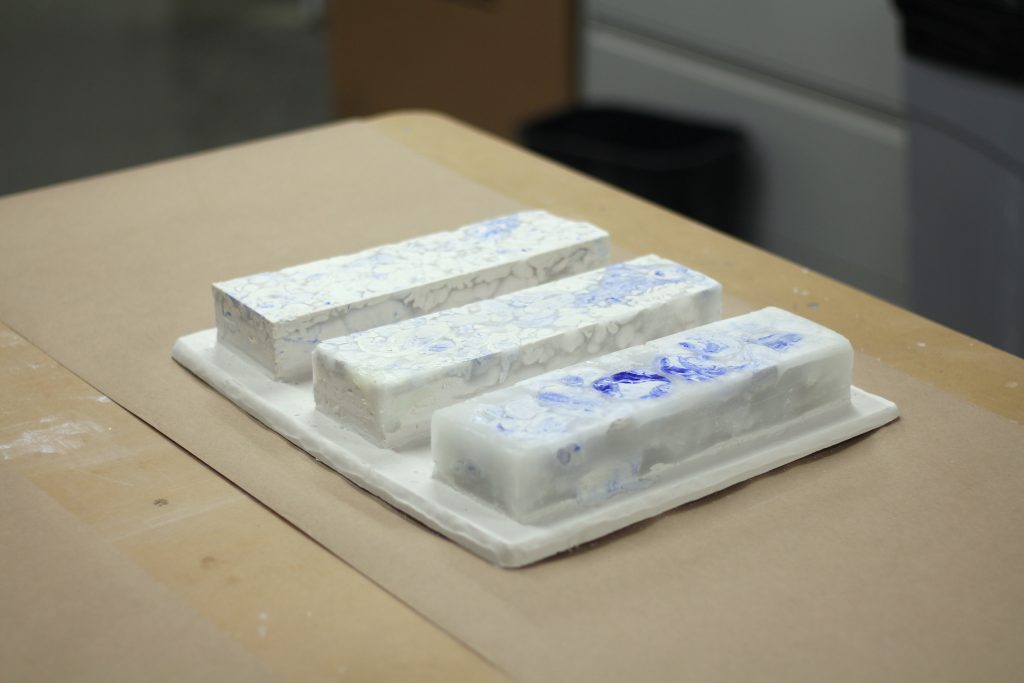
We envision that the entire arch might be completed as a collaboration amongst several participants each with individual sampling criteria, filling in the space clocklike as an exploration of personal time.
